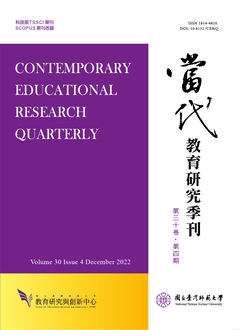

原住民青少年的族群意象會因個人環境與經驗的差異而不同,但其獨特與多元的樣貌較少受到研究者的關注。由於許多原住民文學作品都反映出原住民的母文化與主體經驗,因而相當適合做為探討原住民學生族群意象之材料。本研究以東部一班太魯閣族國三生為對象進行原住民文學閱讀教學,透過原住民文化及語言的學習、結合個人族群身分的思考、省思原住民刻板印象,以及原住民的文化創新與楷模學習,逐步強化學生的自我界定、族群歸屬感與族群態度。從課堂觀察、訪談、學習單及作文資料的分析,發現原住民國中生的族群意象發展從「正向」到「無法歸類」間,有著不同類型的多元樣貌。這些結果除例證原住民文學的應用價值,也對原住民學生的族群意象的發展有更為深入的認識。
Whereas it has been widely agreed that aboriginal adolescents’ ethnic images may dramatically vary due to individual living environments and daily experiences, its unique and diverse scenarios are rarely touched upon. Since most aboriginal literature often reflects the mother culture and experiences encountered by many aborigines, it is an adequate tool to probe the aboriginal students’ ethnic images and attitudes. This study applied aboriginal literature reading to a ninth grade class mostly composed of the Truku tribe in eastern Taiwan. The year-long teaching focused on students’ learning of their mother language and culture, rethinking their ethnicity, ethnic stereotypes, aboriginal creativity in cultural expression, and positive model learning to gradually strengthened their ethnic self-definition, sense of ethnic belonging, and attitudes to their own tribe and community. The analyses of classroom observations, interview protocols, learning sheets and compositions by the students demonstrated the diverse ethnic images—ranging from “positive” to “unclassified.” This result not only exemplifies the value of aboriginal literature, but also deepens our understanding of aboriginal adolescent’s development of ethnic images.

本著作係採用創用 CC 姓名標示-非商業性 3.0 台灣 授權條款授權.
本刊國立台灣師範大學教育研究與創新中心
106台北市和平東路一段162號 | 電話: 02-7749-3670 | E-mail: cerecerq@gmail.com
教創中心 | 師大 | 電子報 | 線上投審系統
本刊由國家科學及技術委員會人文社會科學研究中心補助經費
© 2014 CERI-NTNU
